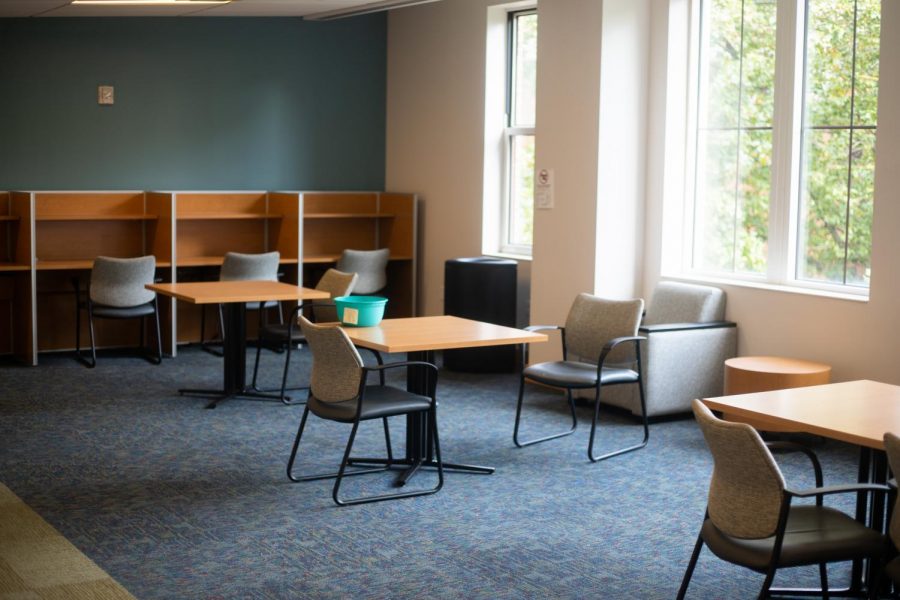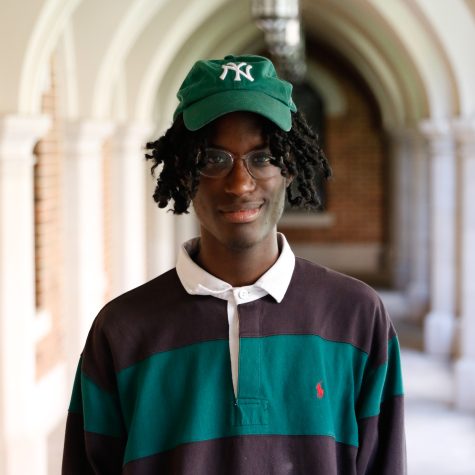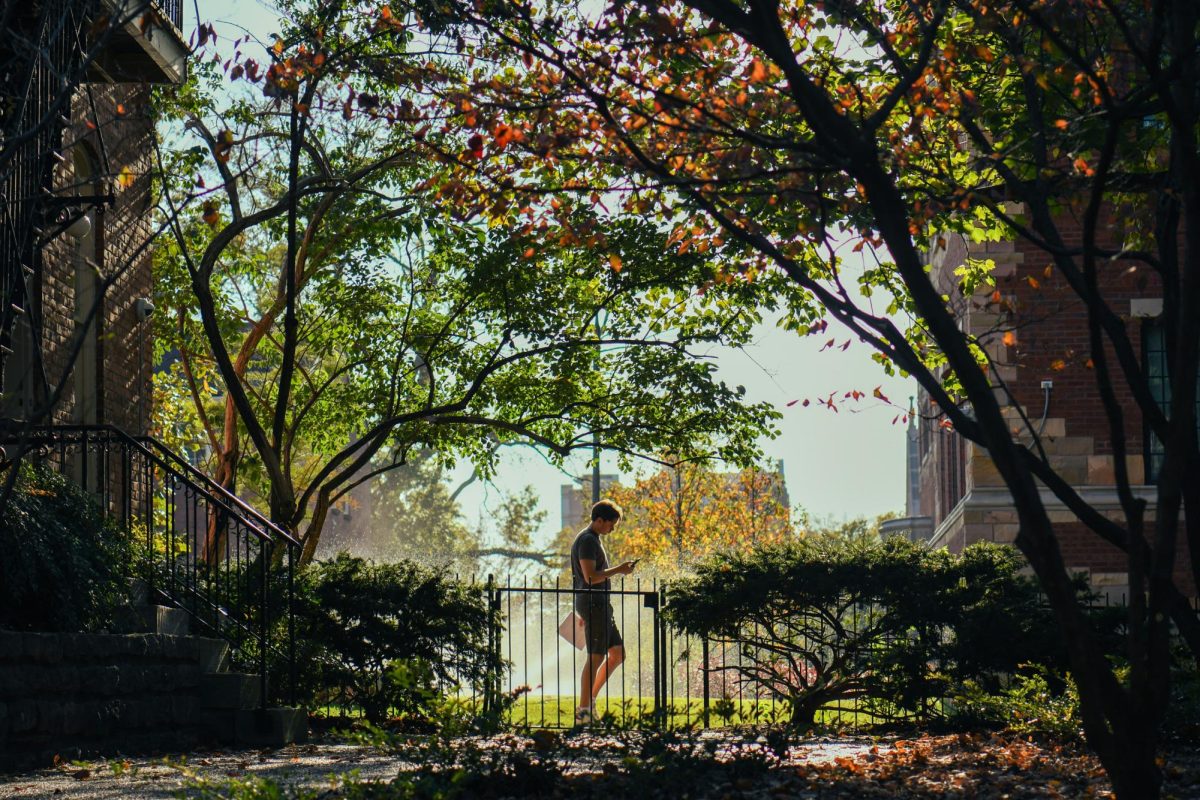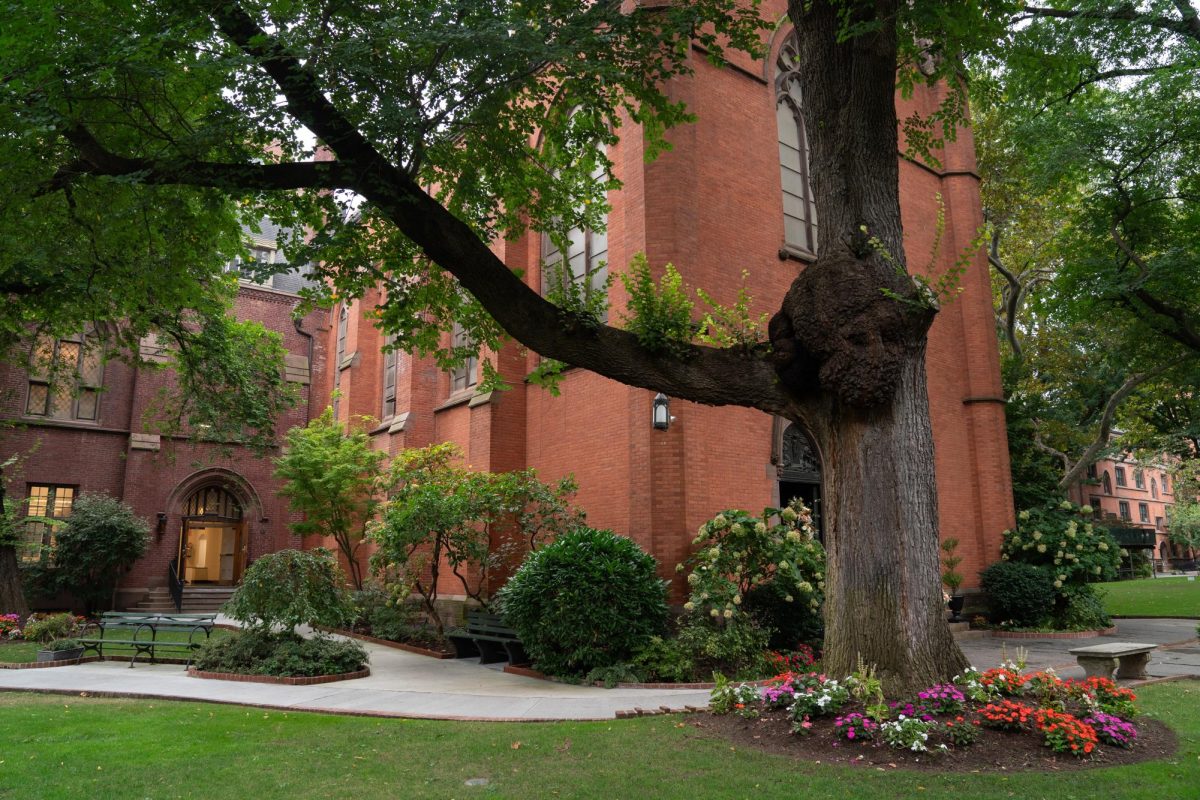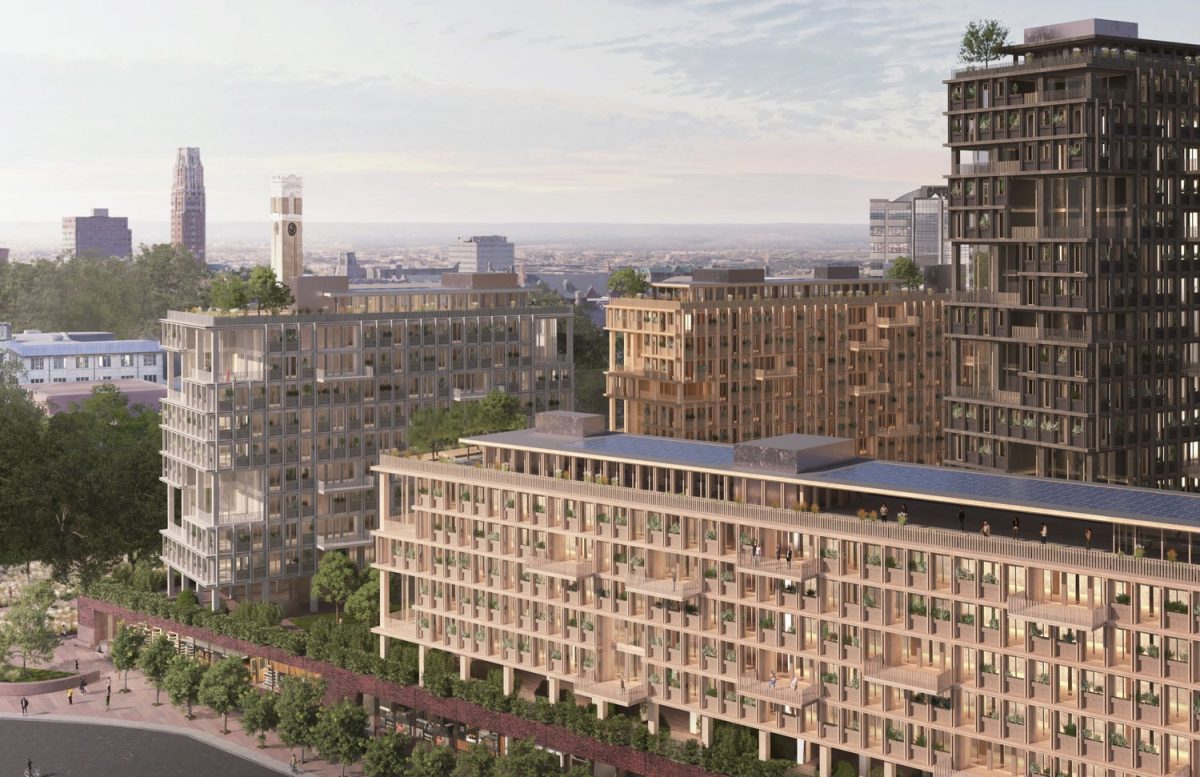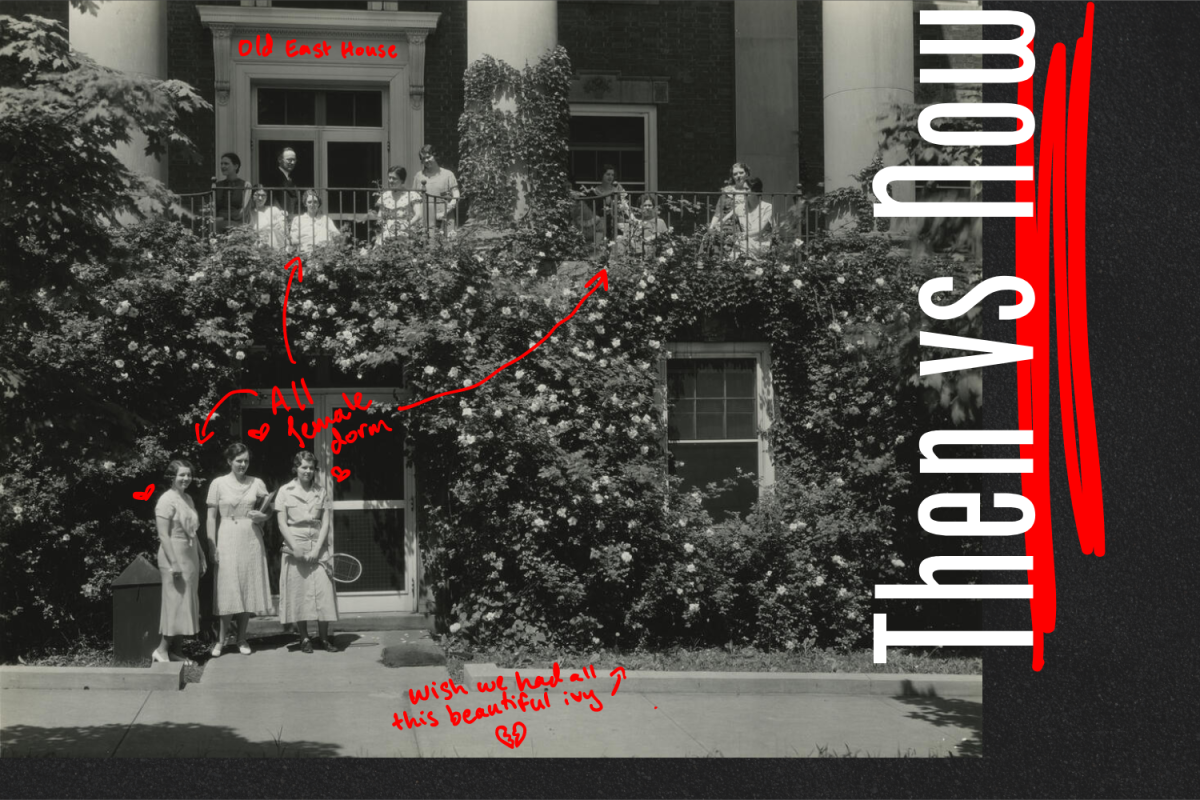One Friday afternoon last month, I returned to my home on the third floor of East House with an insane amount of work to do. There was a shocking sight once I stepped out of the elevator: the common room, where I had spent many long post-midnights studying by myself (and planned to spend another), had been converted into a makeshift mini-concert venue.
The two wooden desks that used to sit in the room’s center were now crammed into a corner, as if they were on time-out, in such a way that I could see chewed gum on their bottom sides that I did not know existed prior. The chairs were arranged into four rows of three each, with two nearby couches comprising a final seating section of their own. There was a single chair stationed at the front of the room, next to which the whiteboard—where, among other funny messages I loved to laugh at mid-study, “Soulja Boy doesn’t exist (smiley face), it’s all in your head” had been scribbled in fading pink ink—was completely erased.
I angrily knocked on my RA’s door. Somehow, though, in the minute or so that passed before I realized that the clothespin on her sign was pointed towards “OFF CAMPUS,” I realized that I had zero right to be the slightest bit upset. It was literally in the name: common—key word “common”—room. I couldn’t mandate in a strongly-worded GroupMe message that the room be rearranged immediately, the same way someone couldn’t just walk in and drag me out with all my books because they wanted to throw a party.
Fortunately, this rule also meant that there was nothing holding me back from bothering other people, from other houses, about a question I suddenly needed an urgent answer to: what are the common rooms for, anyway?
In varying shapes and forms, a majority of residential houses on both Commons and main campus offer general rooms that are designated as shared spaces. Some, like the one on my floor, may be the size of a spacey double with a few desks and rolling chairs; others may be several dorm rooms long with two conference tables and a projector. The rooms themselves exist with no context given whatsoever. There may be implied rights and wrongs for usage, depending on your own values—whoever keeps leaving their opened Commons Center breakfasts on the desk on my floor, please consider the garbage can as an alternative—but the only way to get a sense for “the” standard (which doesn’t actually exist) is to step outside of yourself and check out what everyone else is doing.
When I visited Gillette House, I spent ten minutes looking for the common room on the fifth floor—partly because I was curious about what it looked like after the sprinkler incident—before a good-hearted passerby informed me that the only ones were on the first and second floors. Floor Two’s common room was less of a room and more of an open space; there were no doors or explicit entrances, so it seemed to just be an extension of the hallway. I struck up a conversation with first-year Blake Layman, who was hunched over a laptop and working on an assignment for a class about the history of country music.
“It’s just so much more convenient than going to a library,” Layman said. “Central [Library]’s far; Peabody is kind of small; there’s nowhere to really study in Commons. It’s normally like five or six of us here, and it’s nice too, because I’ll see people coming and going and be able to talk to them, so it’s not like I’m totally isolated.”
The sweet spot between casual conversation and hardcore studying is something that, judging from the students I spoke with, makes the common room concept worth however hard it may be to find. The idea of studying is often presented as a solitary practice—and, even in group study sessions, complete silence is usually a norm that simulates this. But in residential houses all across campus, students are learning to adapt to collaborative cramming in ways that would have made little sense prior.
On the same evening in Crawford House, first-years Mia Honda, Ella Mostoller and Julia Quilici were making progress on various study ventures—two of which were in preparation for a chemistry exam—when I stepped in to chat. All three agreed that the common room was a perfect alternative to dorms that eventually became too distracting.
“Sometimes I can focus in my room,” Mostoller said, as an unfinished list of polyatomic ions sat on the whiteboard behind her. “Like, sometimes when I have a very specific goal and I’m very motivated at working towards it, I’m fine to just be in my room with headphones on and no other distractions. But when it’s something that I’m not enjoying, it’s better to have other people there. It keeps me semi-focused.”
“I was able to get work done in my room at the beginning of the year, because I was very motivated to stay on top of everything,” Quilici said, adding on to Mostoller’s point. “But now it’s so easy to just lay in bed, so I have to go somewhere where there is no bed.”
Even though the urge to sleep is a common distraction from studying, the urge to communicate is another. It seems it could be an inevitable issue in Crawford House’s second-floor common room, too: it’s got two very long tables connected by a third smaller one, with what seems to be enough seating for the entire floor. A projector hangs from the ceiling, and a whiteboard perfect for hangman games and movie screenings faces the sitting area.
It seems, though, that students have found the perfect balance.
“Oh yeah, we had a really nice movie night,” Honda said, when I pointed out the projector.
“We watched ‘Princess Bride.’ It was very fun,” Mostoller said. “I also watched ‘Tangled’—”
“Oh—and we had that game night in here!”
“Yeah, the one with Jackbox?”
“Yeah, we played Jackbox, and a couple board games,” Honda said, before I finally cut off the conversation to lament about the pities of living in a house without a movie projector. (If anyone finds it in their heart to invite me to their next common room “Princess Bride” screening, my email is [email protected]).
I was surprised to learn that this does not step on the toes of other students who want to study, as it did when the common room on my floor was converted into a concert hall. What makes it work in this house, and many others across campus, is a common unspoken camaraderie that binds all residents together through thick and thin. You don’t have to be best friends to be family.
Sometimes, the spontaneous chats that result from such relationships are strange enough to be protected by the Vegas rule. When I asked about the most interesting conversation they had ever been part of in Crawford’s study room, Mostoller and Quilici gave each other a telling look, after which Quilici said between laughs, “That conversation stays between us and God.”
And other times, the conversations venture into deeper territory.
“We’ll be hanging out and having conversations about school things, and then they will often veer off into any number of directions—just about life and what we’re thinking about, the future, the past and stuff,” first-year Murray resident Eli Pruzan said. “There’s one girl in a food politics class who’s always talking about, like, the treatment of animals. It’s good that we have these kinds of interactions where we can talk about whatever really, while also getting work done.”
But no matter the nature of the banter, the amount of homework to be done or the day of the week, common rooms are one place where thousands of students, stories and backgrounds can converge and—for once—be common.
If a perfect, convenient library with every study amenity one could wish for were built on Commons, I wondered aloud, would people still choose to stay in the common room? Everyone I asked said yes.

